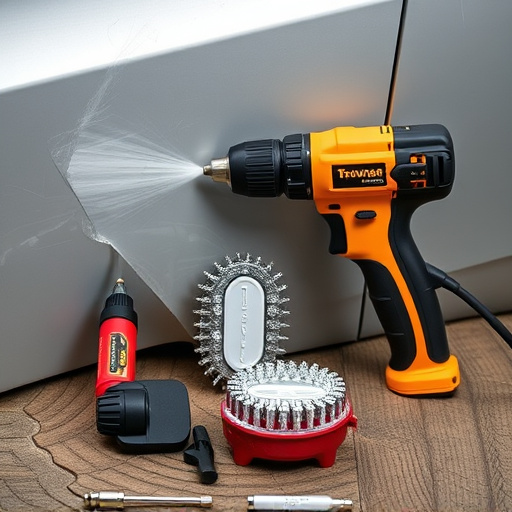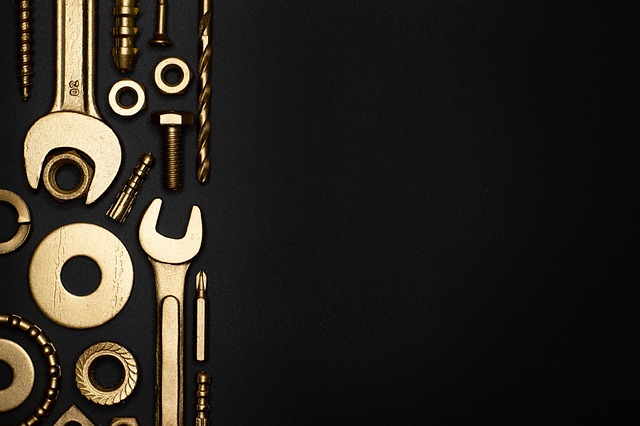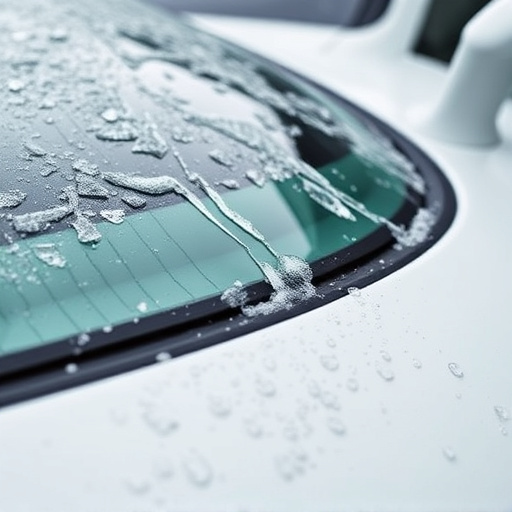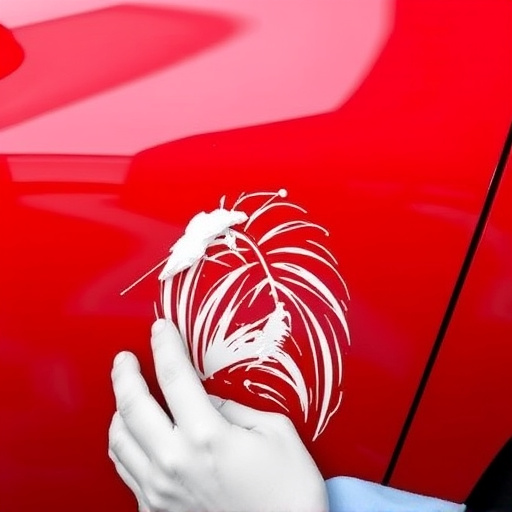Heat damage auto body repair is a specialized process for restoring vehicles affected by extreme heat or fire, addressing structural issues like panel deformation, frame warping, and melted plastic. The meticulous procedure involves assessing damage, cutting and removing burnt materials, precision welding and reshaping, straightening warped parts with advanced heating techniques, and matching original finishes through careful repainting. Key steps include thorough inspection, removal of damaged trim and plastics, surface preparation with filling and sanding, and priming for accurate color replication in auto body shops and fleet repair services.
In the realm of auto body repairs, heat damage can pose significant challenges. When high temperatures affect trim and plastic components, it leaves visible signs and structural imperfections. This article delves into the intricate process of restoring heat-damaged vehicle interiors, focusing on trim and plastic. We explore effective strategies used by professional shops to navigate this complex task, ensuring optimal results in auto body repair for vehicles affected by heat damage.
- Understanding Heat Damage in Auto Body Repairs
- The Process of Restoring Trim and Plastic
- Best Practices and Tips for Effective Restoration
Understanding Heat Damage in Auto Body Repairs
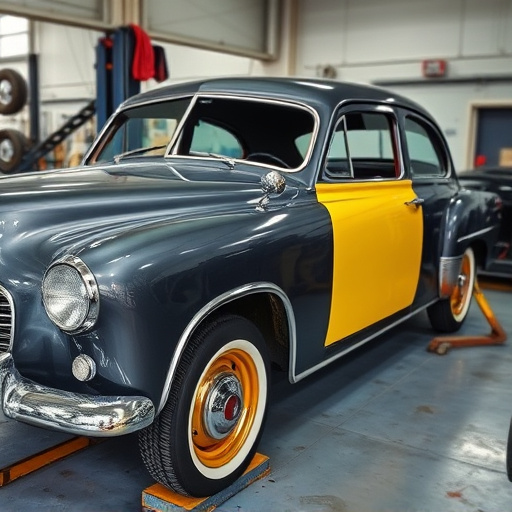
Heat damage in auto body repairs is a specialized challenge that requires meticulous attention to detail and advanced techniques. Often occurring during accidents involving fire or exposure to extreme heat, such as when a vehicle is trapped under debris or involved in a crash near industrial facilities, this type of damage can leave permanent marks on the car’s exterior. The intense heat can deform panels, warp frames, and cause plastic components to soften or melt, leading to complex restoration needs.
Restoring heat-damaged vehicles involves a multi-step process that begins with assessing the extent of the damage. Skilled technicians use specialized tools and techniques, including precision cutting and careful welding, to separate and replace affected sections. For plastic parts, advanced heating methods are employed to carefully reshape and reform them, ensuring they match the vehicle’s original specifications. The goal is not just to fix the visible imperfections but also to ensure structural integrity and safety, making car body restoration a critical aspect of heat damage auto body repair.
The Process of Restoring Trim and Plastic
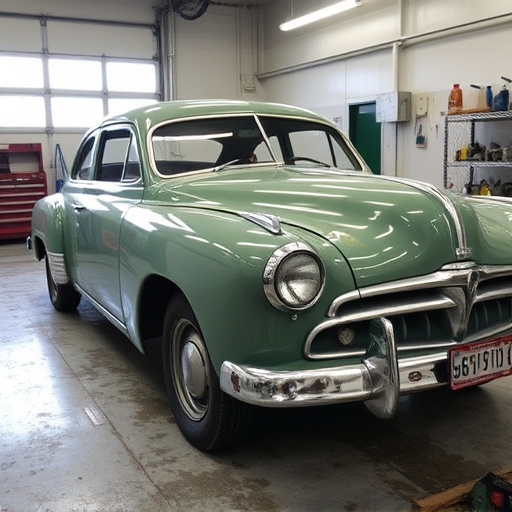
The process of restoring trim and plastic in heat-damaged auto body repairs involves several meticulous steps. After assessing the extent of damage, technicians begin by removing any loose or burnt materials using specialized tools. This careful debris removal is crucial to ensure a clean surface for the restoration process. Once prepared, the affected areas are repaired using precision techniques tailored to trim and plastic components. This may include patching, reshaping, and repainting to match the vehicle’s original finish.
In many cases, heat damage can cause warping or distortion in car trim and plastic parts. Restoration specialists employ advanced heating techniques to carefully straighten these pieces, returning them to their original shape. Afterward, a fine finishing touch is applied, ensuring seamless integration with the rest of the vehicle. This meticulous craftsmanship, combined with high-quality materials, results in a restored exterior that not only matches the car’s pre-damage condition but also enhances its overall appearance, addressing key aspects of heat damage auto body repair.
Best Practices and Tips for Effective Restoration
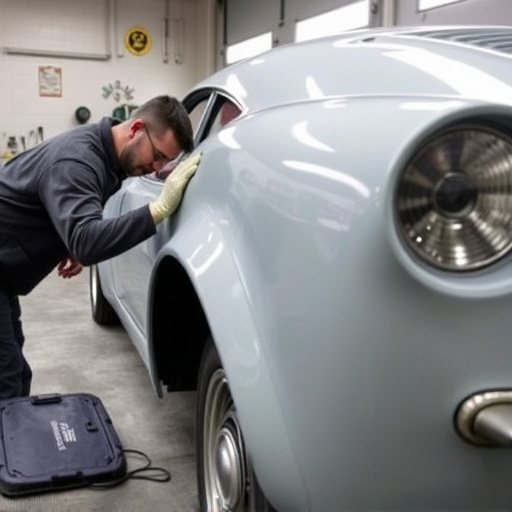
When it comes to restoring trim and plastic after heat damage auto body repairs, adhering to best practices ensures optimal results. Begin by thoroughly inspecting the affected areas, identifying any cracks or warping before starting the restoration process. Using suitable tools like precision knives and sandpaper, carefully remove any loose or damaged material without causing further harm.
Next, clean the surface with a mild detergent and water solution to eliminate dust and contaminants. After drying, apply an appropriate filler to smooth out imperfections, allowing it to cure as per the manufacturer’s instructions. Once cured, sand the area gently until a smooth finish is achieved. Priming before painting helps achieve a more accurate color match, ensuring no visible traces of previous heat damage remain in your vehicle body shop or fleet repair services.
In the realm of heat damage auto body repairs, understanding the unique challenges posed by high temperatures is crucial. The process involves meticulous restoration techniques for trim and plastic components, demanding skill and precision. By adhering to best practices, professionals ensure not only the structural integrity of vehicles but also their aesthetic appeal. This concludes our exploration into the intricate art of repairing heat-affected auto bodies, highlighting the importance of expert craftsmanship in this specialized field.




